
A potter's field, paupers' grave or common grave is a place for the burial of unknown, unclaimed or indigent people. "Potter's field" is of Biblical origin, referring to Akeldama, stated to have been purchased after Judas Iscariot's suicide by the chief priests of Jerusalem with the coins that had been paid to Judas for his identification of Jesus. The priests are stated to have acquired it for the burial of strangers, criminals, and the poor, the coins paid to Judas being considered blood money. Prior to Akeldama's use as a burial ground, it had been a site where potters collected high-quality, deeply red clay for the production of ceramics, thus the name potters' field.

Dunning is one of 77 officially designated community areas of the city of Chicago, Illinois. Dunning also is a neighborhood located on the Northwest Side of the city.

The Clinton Valley Center (CVC), originally called the Eastern Michigan Asylum for the Insane, was a psychiatric hospital located at 140 Elizabeth Lake Road in Pontiac, Michigan. The facility was designated a Michigan State Historic Site in 1974 and listed on the National Register of Historic Places in 1981, with a decrease in its boundaries in 1986. The facility was closed in 1997 and demolished in 2000.
Eloise Psychiatric Hospital was a large complex located in Westland, Michigan. It was named after Eloise Dickerson Davock, the daughter of Detroit's postmaster.
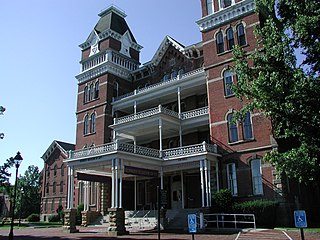
The Athens Lunatic Asylum, now a mixed-use development known as The Ridges, was a Kirkbride Plan mental hospital operated in Athens, Ohio, from 1874 until 1993. During its operation, the hospital provided services to a variety of patients including Civil War veterans, children, and those declared mentally unwell. After a period of disuse the property was redeveloped by the state of Ohio. Today, The Ridges are a part of Ohio University and house the Kennedy Museum of Art as well as an auditorium and many offices, classrooms, and storage facilities.

The Detroit Medical Center (DMC) is a for-profit alliance of hospitals that encompasses over 2,000 licensed beds, 3,000 affiliated physicians and over 12,000 employees. Located in Midtown Detroit, the DMC is affiliated with medical schools from Wayne State University and Michigan State University. Detroit Medical Center hospitals are staffed by physicians from the Michigan State University College of Osteopathic Medicine and the Wayne State University School of Medicine, the largest single-campus medical school in the United States and the nation's fourth largest medical school overall. The Detroit Medical Center is fully accredited by the Joint Commission on Accreditation of Healthcare Organizations.
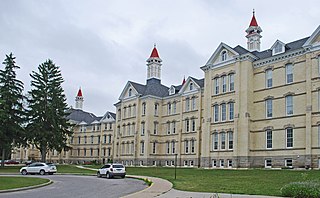
The Traverse City State Hospital, also known at various points as the Northern Michigan Asylum and the Traverse City Regional Psychiatric Hospital, is a decommissioned psychiatric hospital in Traverse City, Michigan. Established in 1881 by James Decker Munson and Perry Hannah, the hospital was in operation from 1885 to 1989. The site has since been redeveloped, reopening in 2002 as The Village at Grand Traverse Commons, a social center including shops, restaurants, office space, and residences.
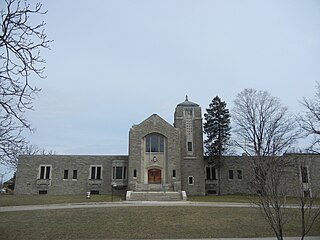
Woodlawn Cemetery is a cemetery located at 19975 Woodward Avenue, opposite the former Michigan State Fairgrounds, between 7 Mile Road and 8 Mile Road, in Detroit, Michigan.
Michigan State Asylum may refer to any number of early mental institutions in the state. Michigan became a state in 1837 and five years later accepted that the principal caring for the mentally afflicted was a state problem. In 1848 a joint resolution required an annual return from the adviser of the number of insane, deaf, dumb, and blind in the state. In that same year the legislature set aside 5,000 acres (2,000 ha) of land for buildings, next year nearly double that amount, and in 1850, 16,000 acres (6,500 ha). Not until 1853 was money, $20,000, appropriated out of the general fund of the state treasury. Many hospitals/prisons have been referred to as "Michigan State Asylum". There were once 16 State-operated psychiatric facilities in Michigan. Between 1987 and 2003 Michigan closed three quarters of its 16 state psychiatric facilities. Here is a partial list.
Mount Olivet Cemetery is a cemetery at 17100 Van Dyke Avenue in the city of Detroit in Wayne County, Michigan. It is owned and operated by the Mt. Elliott Cemetery Association, a not-for-profit Catholic organization that is otherwise administered independently from the Roman Catholic Archdiocese of Detroit and any of the various Catholic religious orders active in Metro Detroit. At 320 acres (130 ha), it is the largest cemetery in Detroit, although it no longer promotes itself publicly as a Catholic establishment.

Cherry Hospital is an inpatient regional referral psychiatric hospital located in Goldsboro, North Carolina, United States. As one of three psychiatric hospitals operated by the North Carolina Department of Health and Human Services, it provides services to 38 counties in the eastern region of North Carolina. It is part of the Division of State Operated Healthcare Facilities within the Department of Health and Human Services, which oversees and manages 14 state-operated healthcare facilities that treat adults and children with mental illness, developmental disabilities, and substance use disorders. The Division's psychiatric hospitals provide comprehensive inpatient mental health services to people with psychiatric illness who cannot be safely treated at a lower level of care.
Joseph Julius Kustus was a professional baseball outfielder for the 1909 Brooklyn Superbas. Tuberculosis forced his early retirement from the game, and contributed to his death at the age of 33.

Broughton Hospital is a psychiatric hospital located in Morganton, North Carolina. It is administered by North Carolina Department of Health and Human Services Division of Mental Health, Developmental Disabilities and Substance Abuse Services.
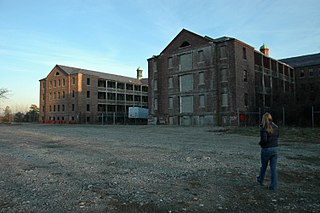
Northampton State Hospital was a historic psychiatric hospital at 1 Prince Street on top of Hospital Hill outside of Northampton, Massachusetts. The hospital building was constructed in 1856. It operated until 1993, and the building was added to the National Register of Historic Places in 1994.

Yarra Bend Asylum was the first permanent institution established in Victoria that was devoted to the treatment of the mentally ill. It opened in 1848 as a ward of the Asylum at Tarban Creek in New South Wales. It was not officially called Yarra Bend Asylum until July 1851 when the Port Phillip District separated from the Colony of New South Wales. Prior to the establishment of Yarra Bend, lunatic patients had been kept in the District's gaols. Yarra Bend was proclaimed an Asylum under the provisions of the Lunacy Statute 1867 (No.309) in the Government Gazette in October 1867.

The Eastside Historic Cemetery District is a historic district bounded by Elmwood Avenue, Mt. Elliott Avenue, Lafayette Street, and Waterloo Street in Detroit, Michigan. The district consists of three separate cemeteries: Mount Elliott Cemetery, Elmwood Cemetery, and the Lafayette Street Cemetery. The district was listed on the National Register of Historic Places in 1982.

White Chapel Memorial Cemetery or simply White Chapel Cemetery is a memorial cemetery at 621 West Long Lake Road in Troy, Oakland County, Michigan. In the 1920s, a group of investors led by Clarence J. Sanger had a new vision for a cemetery and proposed their idea to Detroit architect Alvin Harley. After viewing Harley's initial designs, Sanger urged him to make them more grand. Construction began in 1925 and the cemetery began operation in 1929. Harley's plan created a long central boulevard flanked by rectangular sections extending from the main gate. The boulevard ends at a two-story T-shaped mausoleum faced in white marble, set on a white marble base. Above the central entrance is a square two-story tower which houses a grand hall. Directly behind the hall is one of three chapels in the structure. Crypts are housed in wings extending to the east and west of the grand hall.

Woodmere Cemetery is at West Fort Street and Woodmere Avenue in Detroit, Michigan, in the neighborhood of Springwells Village in what was originally the township of Springwells. Woodmere Cemetery is operated by the Midwest Memorial Group.

Eloise is a 2016 American thriller film directed by Robert Legato and written by Christopher Borrelli. The film stars Eliza Dushku, Robert Patrick, Chace Crawford, Brandon T. Jackson, Nicole Forester, and P. J. Byrne. The film was released on February 3, 2017, by Vertical Entertainment.
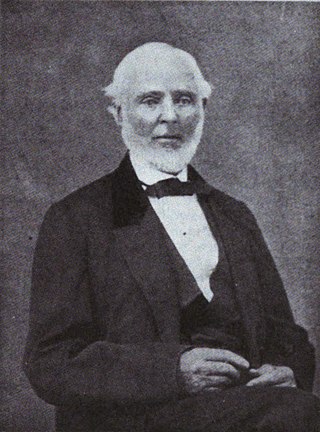
Ammon Brown was an American politician who served two terms in the Michigan House of Representatives. He was also instrumental in forming the Wayne County, Michigan, poorhouse and asylum later known as Eloise, and served as its first keeper.
















